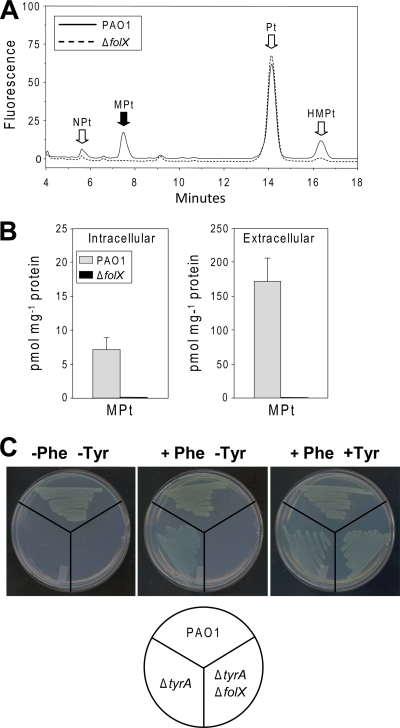FIG. 5.
Genetic evidence implicating folX in tetrahydromonapterin synthesis in P. aeruginosa and supporting the tetrahydromonapterin requirement of P. aeruginosa PhhA in situ. (A) Fluorometric HPLC analysis of pterins extracted from wild-type (PAO1) and ΔfolX strains grown to an A600 of 0.6 in liquid M9 medium supplemented with 0.4% glucose. Note the loss of the monapterin peak in the ΔfolX strain. Abbreviations are the same as those in the legend to Fig. 3A. (B) Quantitation of intra- and extracellular monapterin (per mg cellular protein) in wild-type and ΔfolX strains grown to an A600 of 0.6 in the medium described for panel A. Data are means and standard errors from three replicates. (C) Abolition of the tyrosine prototrophy of a ΔtyrA strain by the deletion of folX. Wild-type P. aeruginosa was included as a control. Plates contained M9 medium supplemented with 0.4% glucose, 0.1% arabinose, 50 μg/ml l-tryptophan, 10 μM p-aminobenzoate, 10 μM 4-hydroxybenzoate, and 10 μM 2,3-dihydroxybenzoate, with or without 50 μg/ml l-phenylalanine and 54 μg/ml l-tyrosine. Note that the ΔtyrA strain requires l-phenylalanine as well as l-tryptophan and p-aminobenzoate, because P. aeruginosa TyrA is a bifunctional cyclohexadienyl dehydrogenase/5-enolpyruvylshikimate-3-phosphate synthase whose ablation eliminates the synthesis of chorismate as well as that of tyrosine.

